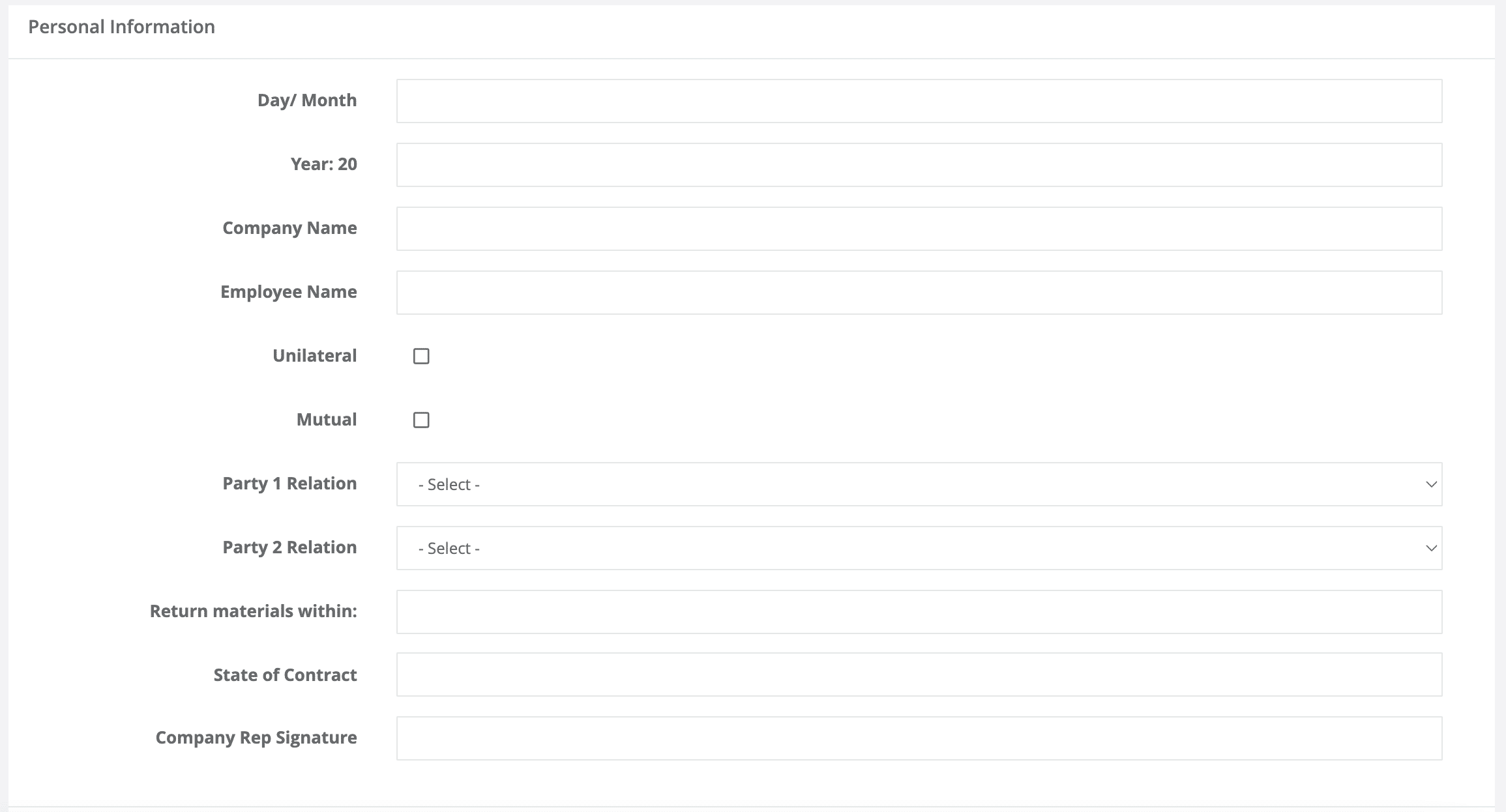As the insurance industry grows, with an estimated new record in premiums by mid-2022, exceeding $7 trillion, customer demands and expectations are also on the rise. Reason why automation and a digital transformation is no longer a nice to have, but a must have.
Why do insurance companies need to automate their processes?
If you landed here, you probably know why.
However, the reason why is because insurance operations are cumbersome and take too long to complete in the traditional manual way.
» It’s estimated that insurance companies take as long as 30 days to solve claims.
Other statistics you may want to consider:
-
- Consumers complain most frequently about how claims are handled. Across all insurers, 68% of all complaints were related to claims handling. Such as delays during the claim process and outright claim denial.
- The second most common reason for customer complaints was claim delays.
- About 1 in 20 insured homes has a claim each year.
Insurance automation goes beyond fixing internal inefficiencies. It’s about improving customer service, customer retention and satisfaction, leading to healthier bottom lines and higher profit margins.
Distribution is another important step where automated processes are making a difference.
” The Covid-19 pandemic may also sensitize the customers toward online channels; increasing its share of the overall distribution space, as customers are more online oriented “

What is Insurance Automation Software?
Insurance automation software are programs used to streamline insurance processes such as marketing, renewals, sales and claims management.
This technology helps professionals in the industry by automating repetitive tasks that usually lead to longer processing, human errors and less than ideal customer experience.
Areas that intensely rely on manual tasks are those that will benefit the most from using intelligent automation technologies. These are:
-
- Document Management
- Claims Management
- Human Resources
- Underwriting
- Internal Collaboration and Communication

» Let’s explore the top software solutions for each area.
Insurance Document Automation Software
-
- HotDocs
- ABBYY
- Virtus Flow
Explore Virtus Flow platform!
Insurance Claims Management Software
-
- Ventiv
- Applied Epic
- Virtus Flow
Insurance HR Automation Software
-
- Bamboo HR
- Intellectsoft
- Virtus Flow
No-Code HR Automation Software!
Insurance Underwriting Software
-
- Naviant
- Zest
- S&P Global
Collaboration and Communication Tools
-
- Slack
- Microsoft Teams
- Virtus Flow
10 Insurance processes automated in 10 Minutes

1. Customer request for information
Today customers expect immediate responses and unparalleled attention. Automating this initial step is vital for businesses in the insurance industry that want to attract and keep customers.
RPA bots (robotic process automation) are a great example of a solution that can support this task. They can interact with any system or application the same way a human worker would.
However, you can do much more than that. You can create a digital 24/7 channel through which customers can submit and track responses to their requests.
2. Proposal generation
Automation systems can help you automate your proposal generation process without the large document processing that usually requires.
Instead, you can design the workflow adding the rules and conditions that apply to the policies you work with. The system will automatically show an offer that suits your users based on information entered.
3. New claims submission
Managing claims can be hard when there’s a multitude of documents and data sources to account for. You can simplify it by putting in place a digital process to submit and route claims automatically while keeping the user informed on decisions made.
RELATED READ: How to Streamline your Claims Management process
4. Claims processing
Process automation tools can:
-
-
- filter claims and send to the person in charge,
- classify and store information automatically,
- notify users automatically,
- help you keep track of all your claims from a single place
- simplify compliance with automatic audit trails, etc.
-
5. Customer onboarding
Managing a high volume of new customers can be hard when insurance specialists are expected to collect sensitive end-customers’ information and supportive documents manually.
Through automation, insurers can do this in a very easy way.
RELATED READ: How to Automate your Customer Onboarding
6. Approvals
Approve or deny policies, documents or requests with a click or automatically. Add logic to your digital process and let the system automatically approve or not, following rules and conditions.
If human interaction is needed, automatically route requests and notify involved parties.
RELATED READ: How to Streamline your Approval Workflows
7. Policy cancellation
A business process that costs you but doesn’t generate money needs to be the slimmest possible.
You can use dynamic forms and workflow automation to automate all steps involved. From the moment a new request is made, to passing the request to the person in charge, notifying and canceling policy internally.

Learn how to create rule based forms in minutes!
8. Contract management
You can now generate documents from information entered in seconds. You can automatically share and store them, add digital signatures and use templates without having to leave that window.
Version control features are very helpful in this area.
RELATED READ: How to use Contract Automation
9. Communication management
Access to information in real time is key to the success of any activity.
Having these systems in place will help insurers to keep all information at hand.
One system to generate, pass on and store all communications and documents needed to complete tasks efficiently.
10. Human Resources management
Recruiting, screening, interviewing, employee onboarding and offboarding, compensation and benefits, training, and employee relations. Whatever the process is, you can easily digitize it and automate it.
RELATED READ: How to digitize your Employee Onboarding process?




